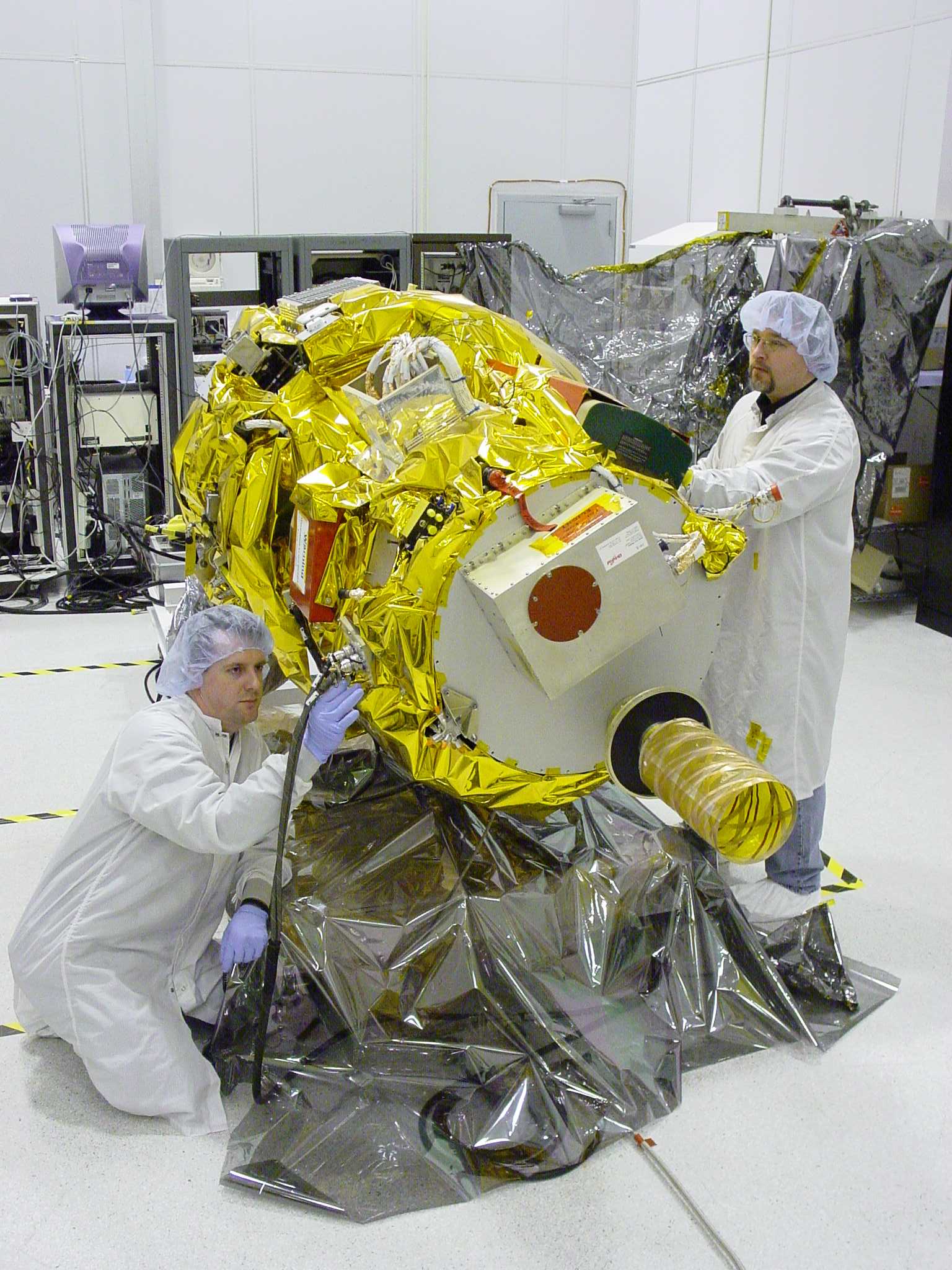Ten years ago today — October 9, 2000 — a Pegasus rocket launched the High Energy Transient Explorer (HETE 2) over the Kwajalein Missile Range in the Marshall Islands.

(Front view of the HETE-2 spacecraft mounted on the Pegasus rocket, before shroud installation. NASA image.)
Including an array of instruments from the U.S., France, and Japan, HETE-2 was designed to investigate cosmic gamma-ray bursts, “the biggest explosions since the Big Bang” according to this press release. HETE discovered that
The distinctive signature [of a short gamma-ray burst] is that of two neutron stars or a neutron star and a black hole merging, followed by a colossal explosion.
You can read more about the HETE mission on this NASA page and this MIT page.
The first HETE spacecraft had been placed in orbit by a Pegasus rocket on November 4, 1996, but it did not separate from the third stage and so was unable to perform its mission. The Pegasus for this mission originated out of Vandenberg AFB and was launched over Kwajalein from its L-1011 carrier aircraft.










